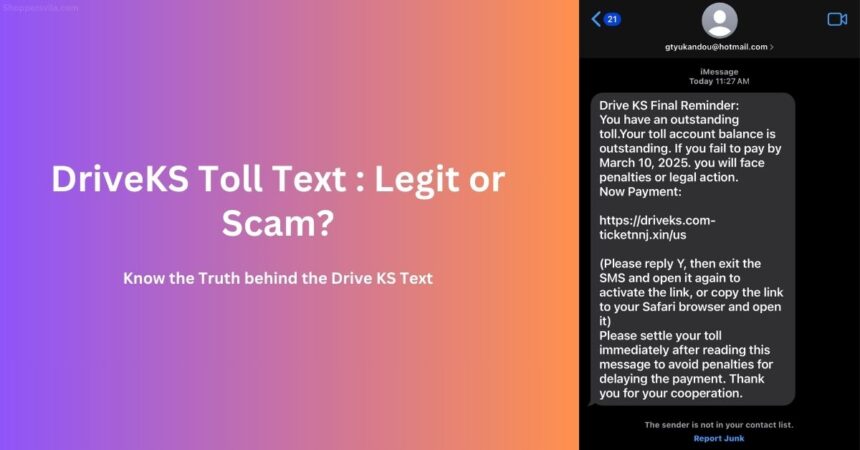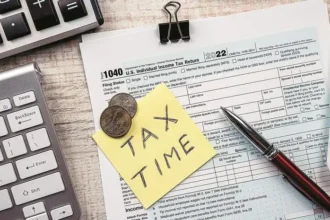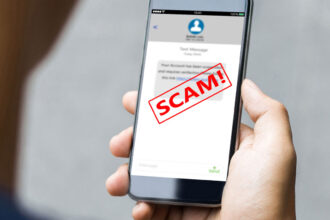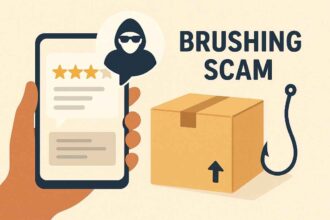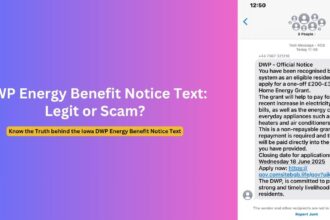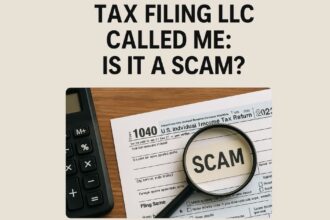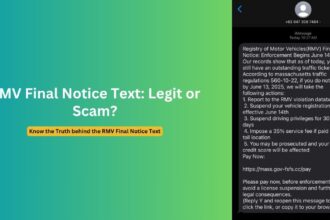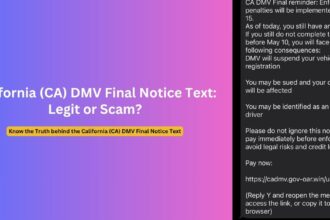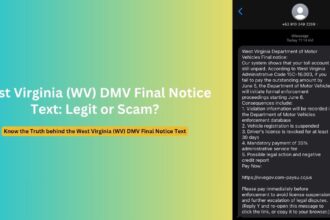In recent months, thousands of Americans have received alarming text messages claiming they owe unpaid tolls to various state agencies, particularly from the “DriveKS” system operated by the Kansas Turnpike Authority.
These messages, which appear official at first glance, are sophisticated scams that have prompted warnings from the FBI, FTC, and state authorities nationwide. The scam has become so widespread that even people who’ve never visited Kansas or states with toll roads are receiving these deceptive messages.
Overview of the Drive KS Toll Text Scam
The scammers behind these fraudulent messages employ several tactics to appear legitimate. Typically, the text includes an official-looking logo or automobile emoji and claims the recipient has an unpaid toll balance that requires immediate payment. The message often specifies a dollar amount and includes threatening language about penalties or legal action if payment isn’t made promptly.
“Your toll account balance is outstanding. If you fail to pay by March 10, 2025, you will face penalties or legal action,” reads one such message claiming to be from DriveKS.
What makes these scams particularly convincing is their professional appearance and urgency. They often include specific instructions, such as “Please reply Y, then exit the SMS and open it again to activate the link,” which adds a sense of legitimacy while actually serving as a trick to get recipients to engage with malicious content.
Jeri Biehler, a spokesperson for the Kansas Turnpike Authority, explained why these scams succeed: “Midwesterners, we want to do the right thing. People get that text and they think, ‘Maybe I do owe,’ and they go ahead and click on it.”
Red Flags That Expose the Fraudsters
Several telltale signs can help identify these scam messages:
- Suspicious sender information: Legitimate toll authorities don’t send messages from personal email domains like Hotmail or Gmail. One Reddit user pointed out, “No institution is going to send anything from a free email address.”
- Unusual domain names: The links in these messages often contain suspicious elements, such as “.xin” (a Chinese domain extension) or unusual combinations like “driveks.com-ticketnnj.xin/us” where the real-looking domain (driveks.com) is actually part of a subdomain of a different website.
- Grammatical errors and odd formatting: Official communications typically maintain professional standards in writing, while scam messages often contain subtle errors or unusual spacing.
- Unsolicited contact: The Kansas Turnpike Authority has explicitly stated they “do not send unsolicited text messages about unpaid tolls.” You’ll only receive legitimate texts if you’ve signed up for KTag notifications.
- Geographical inconsistencies: Some of the most obvious scams target residents of states that don’t even have toll roads. As one official noted, “Missouri has no toll roads,” making any text claiming unpaid Missouri tolls immediately suspect.
The National Scope of the Problem
What started as isolated incidents has grown into a nationwide issue. In April, the Federal Bureau of Investigation sent out a public service alert after receiving 2,000 complaints about these texts in a single month alone. The FBI classified it as a “smishing” con—a combination of SMS (short messaging service) and phishing.
Similarly, the Federal Trade Commission issued a consumer alert in January, warning: “Scammers are pretending to be tolling agencies from coast to coast and sending texts demanding money. Not only is the scammer trying to steal your money, but if you click the link, they could get your personal info (like your driver’s license number)—and even steal your identity.”
Social media platforms like Reddit are filled with reports from people across the country receiving these messages. Some users report getting texts claiming to be from toll authorities in Florida, Georgia, New Jersey, and other states, indicating the scammers are adapting their approach based on target location.
What To Do If You Receive a DriveKS Suspicious Toll Text
If you receive a text claiming you owe toll payments, experts recommend these steps:
- Don’t click any links: This is the most important rule. Clicking links in suspicious messages can lead to malware installation or phishing sites designed to steal your information.
- Don’t reply to the message: Even responding with “STOP” or angry messages confirms to scammers that your number is active, potentially leading to more scam attempts.
- Report the message: Use your phone’s “report junk” option or forward the message to 7726 (SPAM), which helps mobile carriers identify and block scammers.
- File an official complaint: The FBI recommends reporting these scams to the Internet Crime Complaint Center at www.ic3.gov to help authorities track and combat these fraudsters.
- Check your legitimate toll account: If you’re genuinely concerned about unpaid tolls, visit the official website of your state’s toll authority by typing the address directly into your browser—never through a link in a text.
The Kansas Turnpike Authority emphasizes that legitimate toll communications will only come through your registered KTag account, and the turnpike has been cashless since summer 2024, requiring account login for any payments.
How to Protect Yourself From Future Scams
While reporting and deleting current scam messages is important, taking preventative measures can help protect you from future attempts:
- Register for official notifications: If you frequently use toll roads, register for official notifications through the legitimate website of your state’s toll authority.
- Maintain healthy skepticism: Approach all unexpected messages claiming you owe money with caution, especially those with urgent deadlines or threats.
- Verify independently: Always verify claims about unpaid bills by contacting the organization directly through their official website or phone number—not through information provided in the suspicious message.
- Keep your devices updated: Ensure your phone’s operating system and security features are current to help protect against malware.
- Educate family members: Particularly inform elderly relatives or those less familiar with digital scams about these threats and how to identify them.
What To Do If You’ve Already Fallen Victim
If you’ve already clicked a link or provided information in response to one of these scam messages, take these steps immediately:
- Monitor your accounts: Check your bank and credit card statements for unauthorized charges and report any suspicious activity immediately.
- Change passwords: Update passwords for any accounts that may have been compromised, especially if you used the same password across multiple sites.
- Consider a credit freeze: Contact the major credit bureaus (Equifax, Experian, and TransUnion) to place a freeze on your credit report to prevent identity theft.
- Report the fraud: File reports with your local police department, the Federal Trade Commission at reportfraud.ftc.gov, and the Internet Crime Complaint Center.
- Watch for secondary scams: Be alert for follow-up scams, as fraudsters often share information about successful targets.
The toll text scam has proven particularly effective because it targets a common experience—driving on highways—and comes with a relatively small dollar amount that many people might pay without questioning. According to cybersecurity experts, these scammers rely on volume, sending millions of messages in hopes that even a small percentage of recipients will fall for the trick.
“The fact that these scams are targeting random phone numbers with no connection to actual toll accounts demonstrates their indiscriminate nature,” said one cybersecurity analyst. “They’re playing a numbers game, and unfortunately, it only takes a small success rate to make their efforts profitable.”
As these scams continue to evolve, staying informed and maintaining vigilance remains the best defense against becoming a victim. Remember: legitimate toll authorities will never ask for payment through text message links—when in doubt, delete the message and contact the toll authority directly through their official website.
